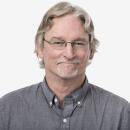Must Reads: Grab an apple and enter the Fillmore, San Francisco’s cradle of psychedelia that continues to rock
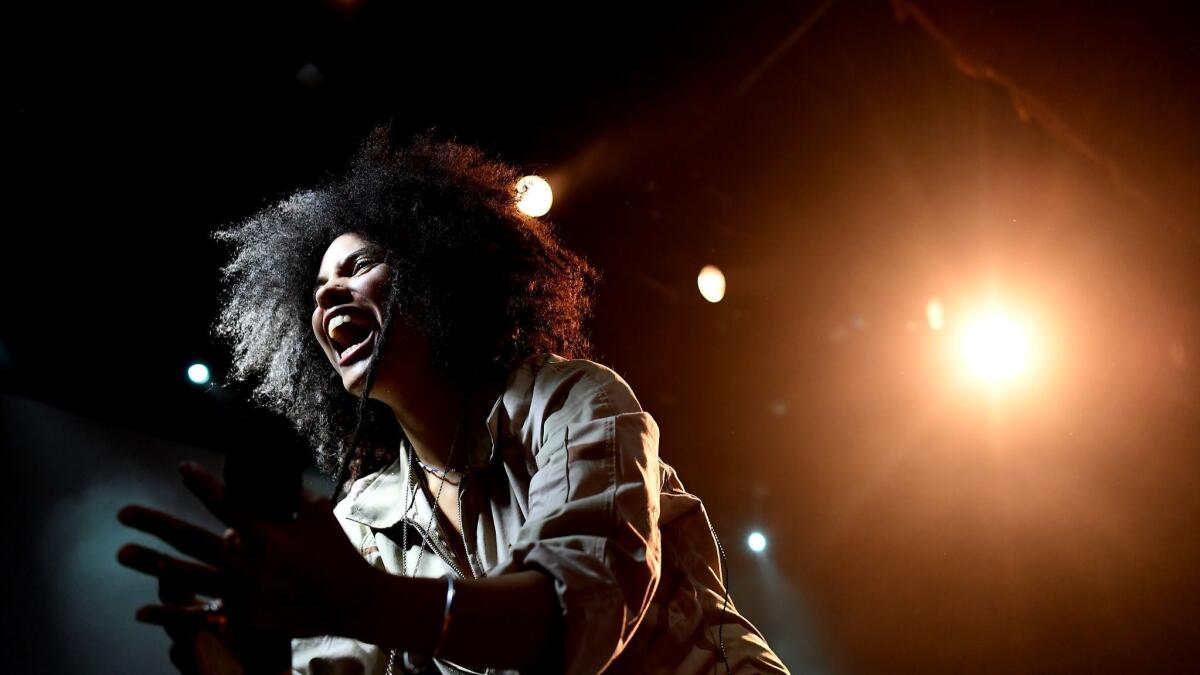
- Share via
It’s 10 minutes to showtime. Step up to the three-story Italianate brick box at Fillmore Street and Geary Boulevard. Avert your eyes from the payday-loan operation that takes up much of the ground floor. Submit to a brief search by security.
Then climb the stairs, grab an apple from the giveaway bin and check out the hundreds of vintage psychedelic posters. The 10 twinkling chandeliers. The four balcony arches. The dance floor crowded with about 1,200 lively bodies. The stage.
This is the Fillmore, where American pop music and youth culture took a sudden psychedelic turn in the mid-’60s.
Janis Joplin, Jimi Hendrix, Jefferson Airplane, Carlos Santana, Steve Miller and the Grateful Dead played some of their most important early shows here. Otis Redding and B.B. King won over some of their first white audiences here.
(You can hear several live performances from the Fillmore in my Spotify playlist below.)
And the music plays on, in a building more than a century old. That alone, for me, made the auditorium a more compelling destination than the T-shirt shops and hippie haunts of Haight-Ashbury. But the auditorium is also part of a larger, long-running drama — complete with an unsolved killing — that few out-of-towners know.
When I saw my first Fillmore show last year (the Wood Brothers, a bluesy folk band), I learned that the auditorium had been built as a dance hall in 1912, converted into a skating rink in the 1930s, then reconverted to hold dances and concerts.
San Francisco’s living room
But I wanted to hear more. So I returned for another show in April.
The headliners this time were Ibeyi, Paris-based 23-year-old twins whose first album was released in 2015. They bounded onto the stage, grinning widely, in matching beige and white jumpsuits, like Afro-Parisian astronauts.
“We’ve missed you, San Francisco!” said singer and keyboard player Lisa-Kaindé Díaz. Then, she and Naomi Díaz launched into an evening of neo soul, drawing on the twins’ roots in Cuba and western Africa.
“This is the Green Room, the headliner’s dressing room,” Fillmore production manager Tony Biancalana had told me the day before, leading me backstage. It was surprisingly small, about 15 feet square, full of mirrors and cabinets.
“We had a German band in once. The manager said, ‘Zee band don’t like zee dressing room.’ I said, ‘Hmm. Hendrix didn’t mind.’“
Biancalana, whose parents roller-skated in this building in the 1940s, has worked in the hall for 34 years.
Though the auditorium doesn’t offer public tours, its standing-room-only setup encourages roaming. There’s a restaurant area upstairs, the walls are crowded with posters from long-ago shows and a grand image of Jerry Garcia presides over the stairwell. The downstairs walls are filled with historic photos, including a racy portrait of Janis Joplin near the bar.
Biancalana showed me the rounded corners (which date to the building’s years as a roller rink); the poster from the Grateful Dead’s first Fillmore show in 1965; and about 100 years’ worth of electrical-system improvisations.
And he explained about the apples. Fillmore concert promoter Bill Graham started the tradition, Biancalana said, because “he wanted you to feel like you were coming into his living room.”
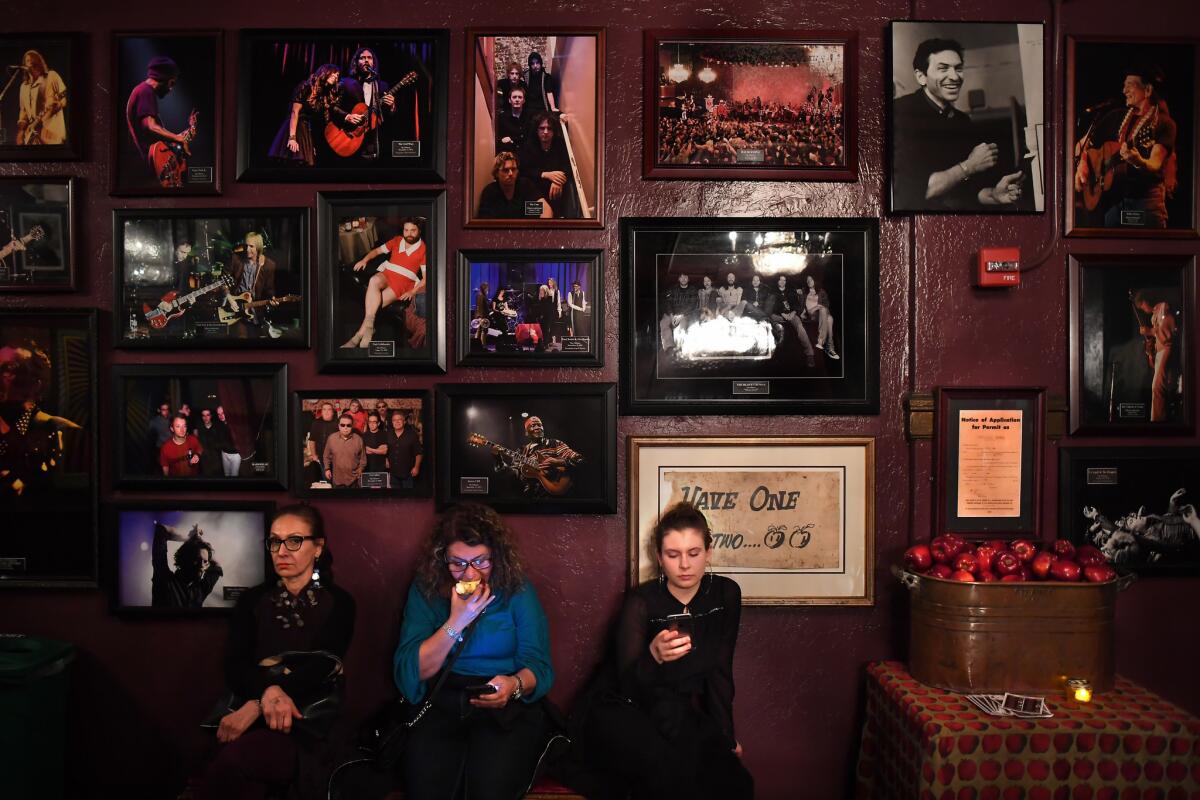
The auditorium, now managed by the entertainment corporation Live Nation, stages more than 150 shows a year.
The Changing Tunes
The Fillmore neighborhood, part of a historically working-class area known as the Western Addition, has been known for more than 100 years for its ethnically mixed population, including many Japanese American families. But after Japan bombed Hawaii and the U.S. entered World War II, those Japanese Americans were incarcerated in internment camps.
Meanwhile, African Americans moved in as shipbuilding and other military operations increased in the Bay Area.
By the early 1950s, the Fillmore neighborhood was home to so many jazz, blues and R&B clubs that boosters were calling it the Harlem of the West. Many city leaders, however, were calling the neighborhood a ghetto and laying plans for decades of demolition and redevelopment.
In the midst of this turmoil, an African American entrepreneur named Charles Sullivan leased the dance hall, renamed it the Fillmore Auditorium, opened it to audiences of color and brought in James Brown, Ike and Tina Turner and Little Richard, who arrived with a young Jimi Hendrix as a sideman.
If the Fillmore District was the Harlem of the West, the auditorium was its Apollo Theater.
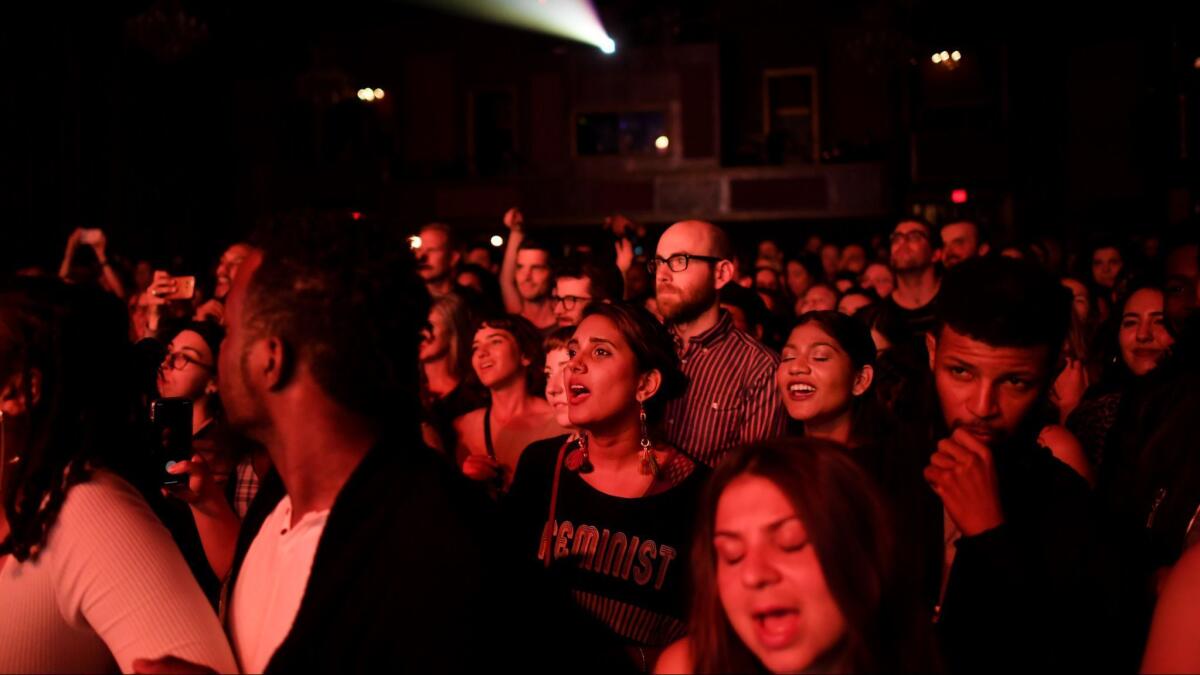
As a ‘70s teenager fascinated by ‘60s rock, however, I knew none of that. For me, the Fillmore story began in late 1965, when the San Francisco Mime Troupe subleased the venue for a fundraiser that featured the very young Jefferson Airplane and five guys who had just changed their name from the Warlocks to the Grateful Dead. The cost of admission was $1.50.
The audience, San Francisco Chronicle music critic Ralph J. Gleason wrote, was “a most remarkable assemblage of humanity … leaping, jumping, dancing, frigging, fragging and frugging on the dance floor.”
This was big. And the mime troupe’s business manager — a 34-year-old from New York named Bill Graham — realized it.
So he quit the troupe, subleased the Fillmore from Sullivan and quickly earned a reputation for making canny musical choices and driving a hard bargain.
In other words, he wasn’t a hippie, and he didn’t create the Fillmore as a music venue. But Graham built up the Fillmore concert operation, then took over booking the venue after Sullivan was shot to death in 1966, a crime that was never solved.
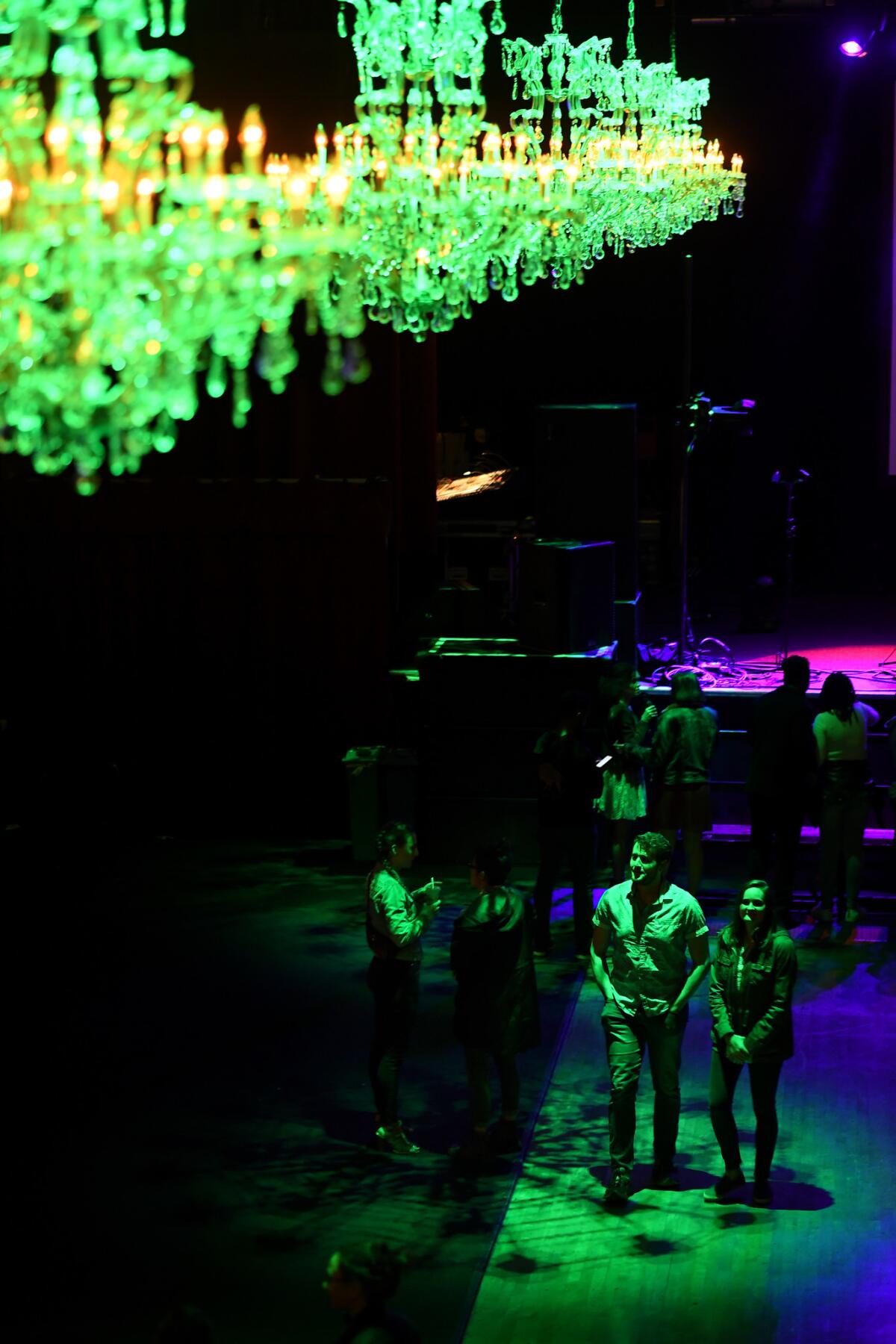
With these shows from 1966 through early 1968, Graham made something new — the modern rock concert.
Cream came to play. So did Quicksilver Messenger Service, Country Joe & the Fish, the Doors, the Byrds, the Yardbirds and Frank Zappa, often accompanied by psychedelic light shows that entranced many concertgoers high on LSD or marijuana. (LSD was legal in California until late 1966.)
“Bill did things like booking Cecil Taylor [an avant-garde jazz pianist] to open for the Yardbirds. Or having Woody Herman [and his big band] open for the Who,” said Dennis McNally, a San Francisco-based author, historian and former publicist for the Grateful Dead.
Then Martin Luther King Jr. was assassinated in Memphis, Tenn., sparking outrage and violence in black neighborhoods nationwide, including the Fillmore. Graham, who had begun working with other venues, abandoned the Fillmore Auditorium, moved to the Carousel Ballroom on South Van Ness Avenue and renamed it Fillmore West.
After 2½ years as a magic address, the original Fillmore was a footnote. So it remained for decades as the neighborhood’s redevelopment lurched along.
Extensive damage in the 1989 earthquake didn’t help. In 1991, Graham, who had been working to revive the venue, was killed in a helicopter crash.
But in 1994, the rehabbed Fillmore reopened.
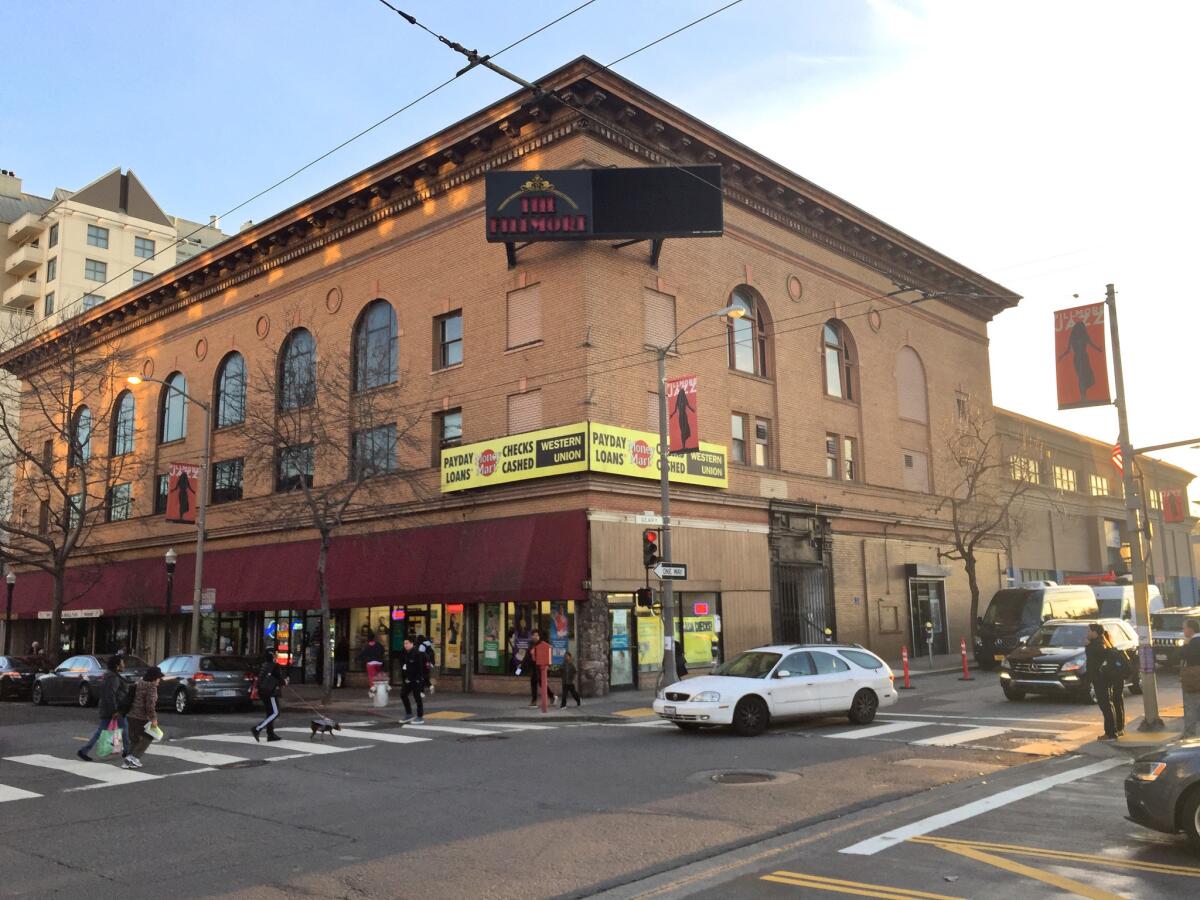
In transition
Nowadays it stands at the convergence of three evolving neighborhoods, which are mostly tourist friendly.
One is the Fillmore District, a mixed bag that includes two Michelin-starred restaurants and several vacant storefronts, all within a block of the theater.
This was the heart of black San Francisco, author David Talbot has written, “and redevelopment tore it out.”
The second neighborhood is Pacific Heights, whose smart shops and trendy restaurants have been creeping south on Fillmore Street toward the auditorium for years.
The third is Japantown, a reconstituted ethnic enclave where two sleek and recently upgraded hotels stand among ramen spots and gift shops.
In other words, dinner nearby and a show at the Fillmore these days can mean almost anything.
Within half a mile of the venue, I had a bacon breakfast at Sweet Maple, a bowl of ramen at Hinodeya, and a small-plates dinner at State Bird Provisions, all great meals.
I shopped at Browser Books and listened to funky jazz in the Boom Boom Room — a gritty, intimate venue on Fillmore Street that holds fewer than 200 people.
I slept in the Kimpton Buchanan, strolled two-thirds of a mile to check out the Victorian painted ladies houses of Alamo Square Park, and wished I’d had another hour to check out the Church of 8 Wheels, formerly a Catholic house of worship turned roller rink.
‘They get the chills’
And, of course, the auditorium itself, part ’60s shrine, part contemporary scene, harbors its own surprises.
In October Golden State Warriors star Steph Curry and his wife, Ayesha, delighted the audience by stepping onstage to sing with folk musician Johnnyswim. (Yes, there’s video.)
Some nights, the headliner is a seasoned veteran: Los Lobos, Lucinda Williams, Willie Nelson or (until his death in 2017) Tom Petty. Other nights, you find up-and-comers such as Ibeyi, whose energy was as boundless at show’s end as it was at the beginning.
“For any young band, when they get to play the Fillmore, and they know who stood on that stage — they get the chills,” McNally had told me just before the show. “It’s still quite meaningful.”
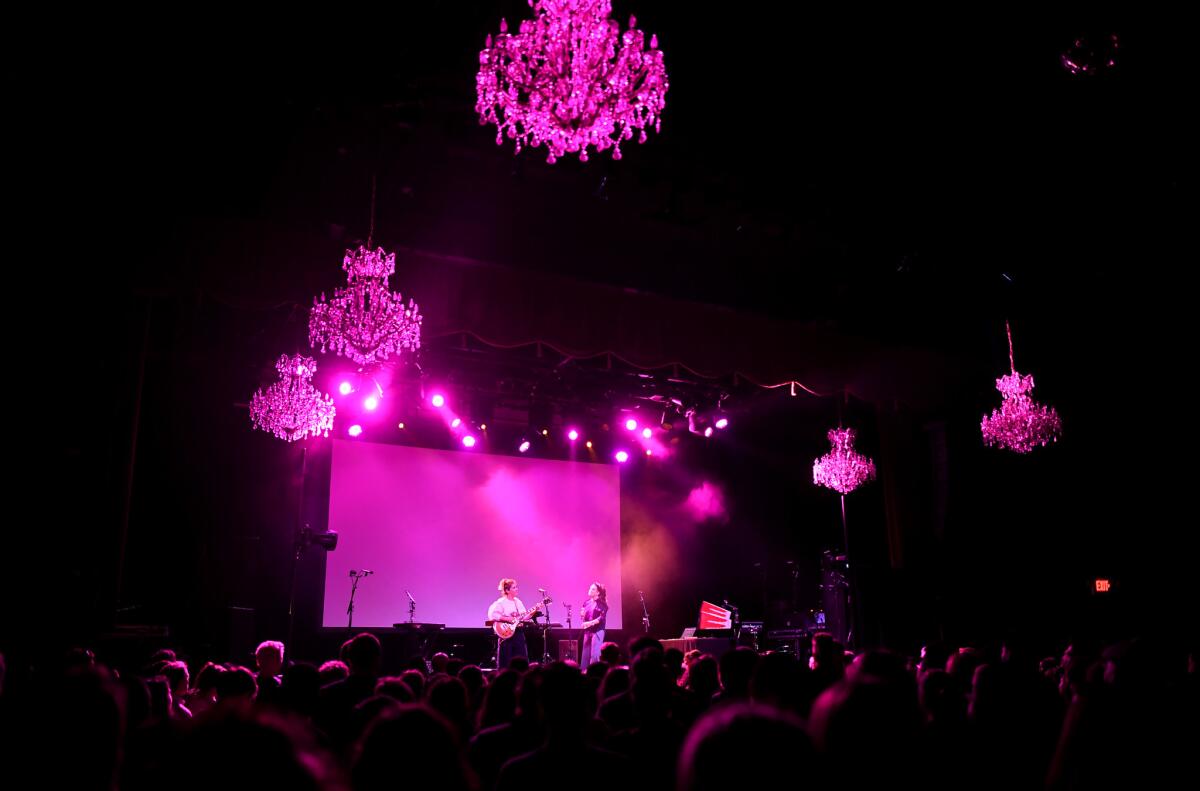
As Lisa-Kaindé Díaz prowled the stage, her Afro flopped wildly. Naomi Díaz busied herself with percussion instruments, including her own body — she’d often stand to slap her thighs and chest and snap her fingers.
The audience was every shade of white, beige and brown, mostly women. There were no guitar solos — no guitarist, for that matter. Behind the twins, a screen displayed trippy video sequences — a far cry from the extended riffing and analog light shows of decades gone by.
The twins closed with “Deathless,” an anthem of resilience, urging the audience to sing along until it seemed everyone on the floor was roaring.
“We are deathless. Whatever happens, we are deathless.”
Then we all filed out, collecting apples and posters as we went.
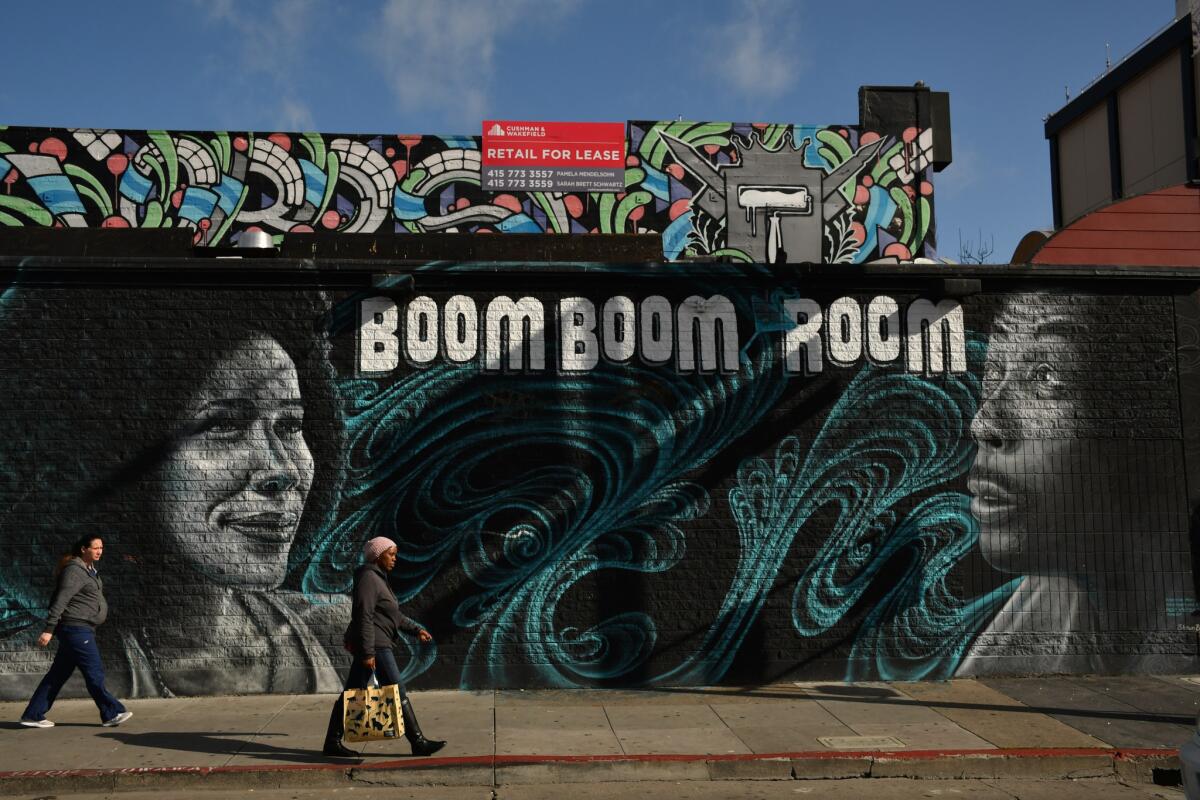
The Fillmore District
For a jazzier scene in a throwback setting far smaller than the Fillmore, step across Geary Boulevard to the Boom Boom Room at 1601 Fillmore St. Once known for its association with John Lee Hooker, the Boom Boom Room is a long, narrow lounge (no food) with a round booth reserved in case Hooker, who died in 2001, should return.
These days, owner Zander Andreas books “blues, boogie, soul, groove and funk,” usually with a cover charge of $7-$15. I caught a rollicking, organ-driven jazz-funk show by the Wil Blades Starting 5.
The SF Jazz Center (201 Franklin St., San Francisco; [866] 920-5299, www.sfjazz.org), about a mile southwest of the Fillmore, includes the 700-seat Miner Auditorium and the 100-seat Joe Henderson Lab.
Japantown
Just north of Geary Boulevard, a compact, reborn Japantown includes the Japan Center mall, several ramen and sushi spots, the graceful Peace Pagoda and the stylish Kabuki and Kimpton Buchanan hotels.
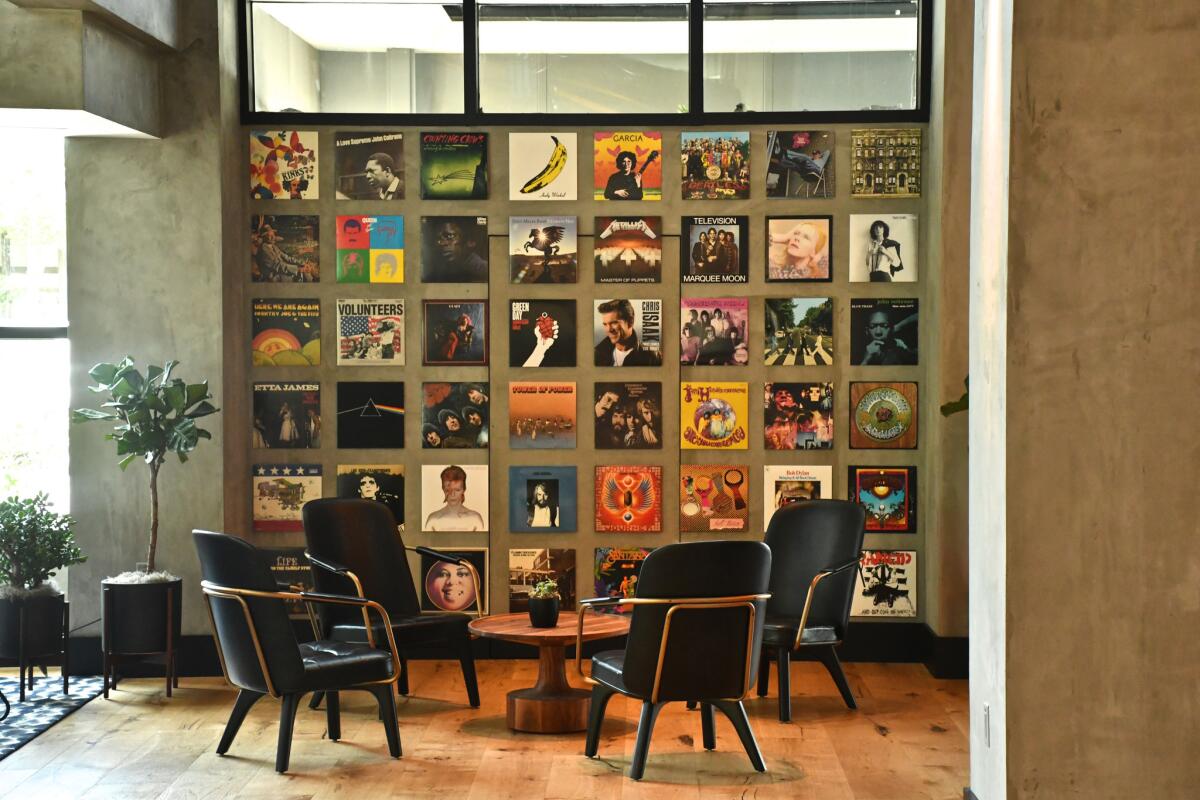
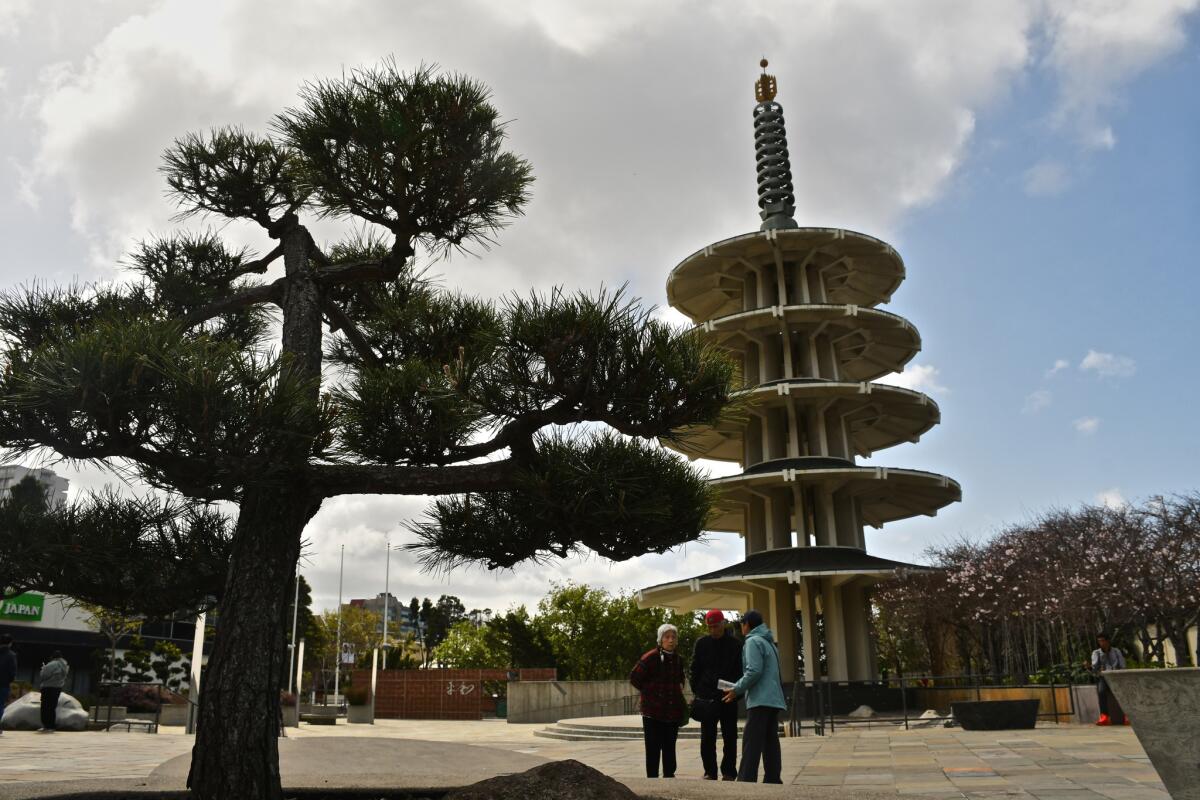
Pacific Heights
Head north on Fillmore Street from the auditorium and within a few blocks you’ll notice the shops getting fancier, the prices getting higher. This is Pacific Heights. If you keep climbing to Broadway, you’ll be able to see San Francisco Bay from the top of the hill.
Along the way you’ll pass dozens of boutiques and restaurants, including the Grove at 2016 Fillmore (where I had two hearty breakfasts); Jane at 2123 Fillmore (where I waited in a close-quarters line for a good lunch); and Chouquet’s, 2500 Washington St. at Fillmore (where I enjoyed a better lunch, smoked trout salad, at a sidewalk table).
If you go
THE BEST WAY TO SAN FRANCISCO
From LAX, American, Delta, United, Southwest and Alaska offer nonstop and connecting service (change of planes) to San Francisco. Restricted round-trip airfare from $88, including taxes and fees.
WHERE TO SLEEP
Kimpton Buchanan Hotel, 1800 Sutter St., San Francisco; (415) 921-4000. This 131-room lodging was redone in 2015 in Japanese modern style. Doubles from $180, before taxes.
Hotel Kabuki, 1625 Post St., San Francisco; (415) 922-3200. This 225-room lodging fuses Japanese style with pop culture, including a lobby wall of vintage album covers and a large library. Rooms for two typically start at $220, before taxes.
WHERE TO EAT
State Bird Provisions, 1529 Fillmore St., San Francisco; (415) 795-1272. Regional dishes served dim sum style in a thunderously loud dining room. It and and its more casual next-door sibling, the Progress, both got one-star Michelin ratings this year. Small plates $3-$12, most larger dishes $15-$85. Dinner only.
Hinodeya Ramen Bar, 1737 Buchanan St., San Francisco. Try the house ramen, which includes whole wheat noodles, bonito, kombu, scallop, pork, egg, seaweed and green onions. Small plates and side dishes $4-$9. Ramen $14-$15. Lunch and dinner. Closed Tuesdays. No reservations (and no phone number on website).
Sweet Maple, 2101 Sutter St., San Francisco; (415) 655-9169. Breakfast and lunch. Known for its “millionaire’s bacon” (baked with brown sugar, cayenne, red and black peppers). American comfort food with hints of Asian influence. Often a line. Breakfast and lunch. Main dishes $12-$22.
TO LEARN MORE
Fillmore, 1805 Geary Blvd., San Francisco; (415) 346-6000. To buy tickets through Ticketmaster: (800) 745-3000. The box office opens on show nights from the published door time until 10 p.m., and on Sundays from 10 a.m. to 3 p.m. Ordering on line, expect service and order-processing fees to boost your cost above face value by $15 or more per ticket.
San Francisco Visitor Information Center, 900 Market St., San Francisco; (415) 391-2000
christopher.reynolds@latimes.com
Follow Reynolds on Twitter: @MrCSReynolds
Sign up for The Wild
We’ll help you find the best places to hike, bike and run, as well as the perfect silent spots for meditation and yoga.
You may occasionally receive promotional content from the Los Angeles Times.
